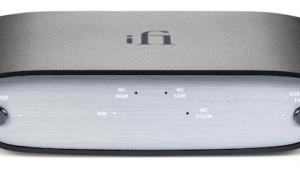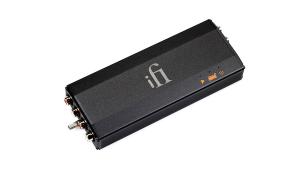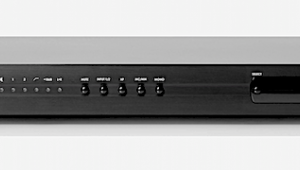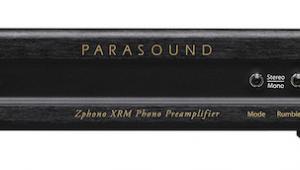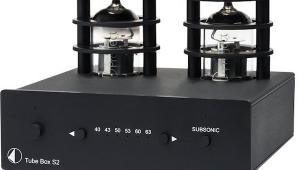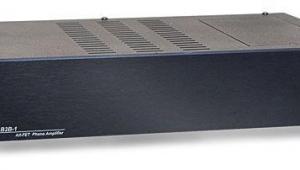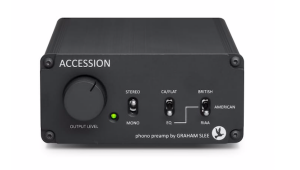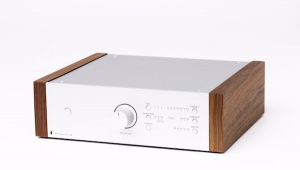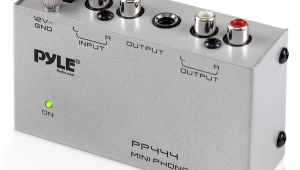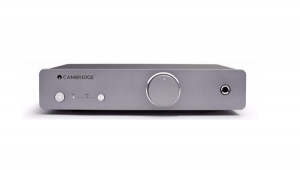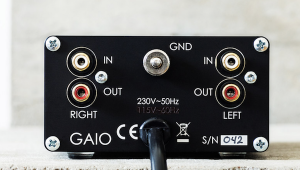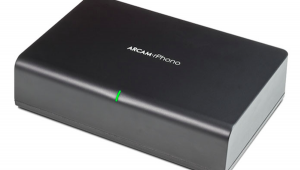Great to hear about another under 1K kick-axe phono amp...This one sounds like a slam dunk winner!!!
QHW Audio’s Surprising “The Vinyl” MM/MC Phono Preamp

A second surprising thing about “The Vinyl” is its price: $619.83 plus $25 to ship to The United States. That’s not necessarily surprising, depending upon its build quality and sonic performance. Considering the price then, it’s more than surprising to find that rather than utilizing an “off the shelf” op-amp for the MC input, The Vinyl sports discrete bipolar transistors.
Likewise, the MM uses not an “off the shelf” chip but rather a QHW developed AE2270 op-amp. “Op-amp” is not a dirty word, contrary to what some audiophiles believe. It can be, using “off the shelf” ones. As I’ve written more than few times, careful in-house op-amp development can produce better than discrete circuit performance and SMT (surface mount technology) is not a dirty word.
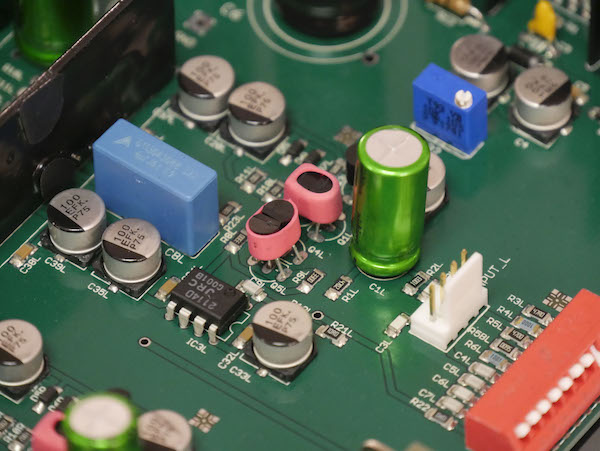
Who is the “Spaniard In the Works” (sorry, I’ve been listening to John Lennon’s remixed Plastic Ono Band album)? “The Vinyl”’s designer is Francisco Vizcaya Lopez, who is a music professor, concert performer, composer and has some engineering in his background. So, he brings to this design a serious musical background. Enough surprises? But wait! There’s more!
“The Vinyl”, hand soldered in Spain, features two inputs (one for MM and one for MC) switchable on the back panel.
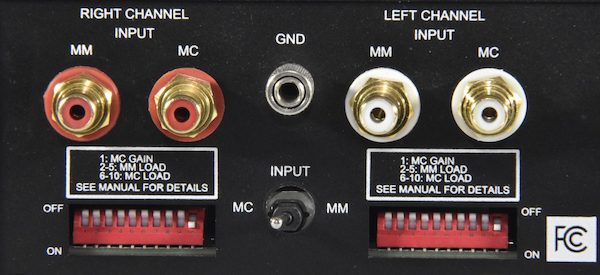
The dip switch arrangement allows you to independently configure both the MC and MM inputs, so at the flip of the rear panel switch you can choose between the two sets of chassis mounted RCA jack inputs. Carefully selected low tolerance RIAA components include 0.1% 25ppm thin film resistors. The website lists MC gain @1kHz as switchable between 63dB and 69dB, while the manual says 64dB and 71dB. Either way those choices should work with any low output MC cartridge. MM input capacitance is adjustable in multiple steps from 47pF to 617pF (that’s according to the online manual—the printed one slightly differs). The rest of the specs are at the bottom. The power supply is another surprise: it’s a 36V DC unit terminated in an IEC jack so you can play with A.C. cables and if you never have because you’re so sure they can’t possibly make a difference you’re only fooling yourself (I promise). Finally, the front fascia is a nicely finished brushed aluminum plate.
At this point it’s not a surprise, but had I not earlier divulged the $619.83 price tag, it would now be among the biggest surprise, until you get to hear it, which should provide the biggest surprise of all.
Set-Up
Keep the instructions and dip switch adjustment card handy because the rear panel won’t tell you anything and the switches themselves are not marked. No big deal.
Again, I used the SME M6 turntable and both the Ortofon 2M Black LVB 250 ($999) and the Ortofon Cadenza Black ($2879) running the $619 “The Vinyl” into my big rig, which now includes the Wilson Audio Specialties XVX speakers. For the Cadenza I set gain at 63dB (or 64dB) and loaded it first at 100 ohms and once I’d played plenty of records to fully break in the phono preamp, I did the serious listening. However, all through the break-in this low priced phono preamp produced surprise (of course!) and nothing but pleasure. Not “for the price” kind of pleasure, but rather the fully enjoyable, musically and sonically fulfilling kind. Yes, a $619 phono preamp paired with $329,000 loudspeakers. Eventually I changed the loading to 47 ohms, not because it was bright at 100 ohms and the balance was in need of “taming”, but because the spectral balance improved at 47 ohms.
An industry friend had stopped by (wearing a mask) to pick up a piece of gear and being a “folkie”, he asked to hear Peter, Paul & Mary’s debut album, which I had on an original gold label Warner Brothers pressing. It’s a fine recording by the late Bill Schwartau, who engineered so many great albums (including Bill Evans/Jim Hall Undercurrents, The Genius of Ray Charles, etc.). About Schwartau Phil Ramone said in his autobiography, "Bill Schwartau was one of the unsung heroes of our industry, and every recording professional on the East Coast admired him. His ability to hear 'through the microphone' was impeccable; and when Bill set up a session, what you heard in the studio matched what you heard in the control room. He used microphones and aural shading to convey subtlety and nuance in the same way a painter uses light and color." So if you see his credit on a record jacket, expect good sound.
I hadn’t put it away and had listened to it through another phono preamp so that was the first record to which I paid attention. I was beyond pleasantly surprised (“shock” might be the word) to hear how this inexpensive piece dealt with instrumental attack, sustain and decay. The hard-strummed acoustic guitars shouldn’t sound “hard” and they didn’t. Instead, the attack was natural and relaxed, but not soft either. The sustain generous so you could hear the body and the decay generous—the kind of sonic performance you expect from costly phono preamps. The vocals had the same natural presentation, with each of the three singers in three-dimensional relief against a very subtle studio acoustic. When I played the record on my far more costly reference front end, yes, the presentation was better in every way, but the essence remained the same, meaning the less costly everything committed minor acts of omission, starting with some dynamic diminishment, less precise attack and the like but I was comparing for instance a $50,000 phono preamp to one costing $619! (not that I’d trade in the costly one and take the money and run, mind you).
This inexpensive phono preamp’s top to bottom performance impressed, but best was its transparency, timbral neutrality and freedom from obvious sonic artifacts. On its own, in a very costly system, it got out of the way and just let the music through.
Sadly, more great records show up than I can get to and here’s one that sounded absolutely spectacular through this inexpensive phono preamp: Monty Alexander, Love You Madly Live at Bubba’s (Resonance HLP 9047). This is a two LP set recorded in 1982 to 24 track analog tape on Criterion’s Mobile Truck by studio owner Mack Emerman (on this website I don’t have to tell you about Criterion Studios). The recording and performance get 10s. As does Bernie Grundman’s mastering. Pianist Alexander is backed by bass, drums and percussion.
I promise, you’d never know you were hearing it through a $619 phono preamplifier. The acoustic bass was so natural and well-controlled, the drums immediate and natural-sounding—particularly the cymbals and rim shots— and Alexander’s hard-driving piano produced dynamics and convincing timbral verisimilitude. Add a transparent, generously sized soundstage presentation that had width, height and especially depth (percussionist Robert Thomas Jr. placed well behind the piano, stage right (whether or not that’s from where he actually played) and top it off with “you are in the room” applause and you have both a really great recording and a ridiculously good phono preamplifier that I think you could insert into your system and fool the most demanding audio fanatic into thinking cost ten times what it actually costs. And it’s quiet.
Just to bring this down to earth: switching to the big rig produced far greater spatial perspective (more of an “in the club” experience), a piano in greater relief and more compactly and appropriately sized, a more subtle bass attack and sustain and a few other things too, but still I came away from that listen more impressed than ever by what “The Vinyl” accomplished.
Conclusion
I always love to plug things in and be surprised, particularly by lower priced components that appear to have been well-designed and constructed. “The Vinyl” produced a big sonic surprise that was as big as the price, which I didn’t know until well after the first “plug and play”. I appreciated everything about its looks, construction, ergonomics (particularly if you have two arms, or turntables, equipped one each with a MM and MM cartridge) and of course the sound. It’s not surprising to find out that the designer is also an accomplished musician. Way highly recommended. And, if you buy and don’t agree with me, you have 21 days to listen, return and get your money back. How can you go wrong? And for you wealthy readers, you ought to get one just to hear what’s possible for $619 and to have a “spare” in case your costly rig blows up.
Technical specifications
Nominal gain at 1 KHz:
• MM: 42 dB
• MC low: 63 dB
• MC high: 69 dB
Maximum output level: 9 V RMS or more.
MM input impedance: 47 KOhm
MM input capacitance: adjustable from 47 pF to 617 pF.
MC input impedance: adjustable from 47 Ohms or less to 32 KOhms.
MC input capacitance: 150 pF.
Total harmonic distortion at 1 KHz, 2 V RMS output, 10 KOhms load (20 HZ – 20 KHz band):
• MM: 0,004 % or less.
• MC low: 0,007 % or less.
RIAA deviation 20 Hz – 20 KHz: less than ± 0,1 dB.
Residual noise: < 300 uV (MC input shorted).
Signal to noise ratio:
• MM: -84 dB or better (input shorted, referred to 2 V RMS).
• MM: -96 dB or better (input shorted, referred to maximum output).
• MC low: -78 dB or better (input shorted, referred to 2 V RMS).
• MC low: -90 dB or better (input shorted, referred to maximum output).
Crosstalk: < -96 dB (at 1 KHz referred to 2 V RMS output in other channel).
Power consumption: < 10 W
Power supply: output, 36 V DC, input 100 V – 240 V AC 50 – 60 Hz.
Maximum dimensions: 243 mm (L) x 218 mm (W) x 89 mm (H) (including connectors and feet).
Weight: 2 kg
- Log in or register to post comments

Their site has the same price but in € Euro not USD. Slight bump but you may want to edit to change the pricing to Euro.

So... this is built in Spain and then shipped to the US for $645, which at the current currency rate is €538?
However, when I go to their offical site, price for The Vinyl is €750.
Michael, either you made a mistake and you should correct your information, or ... this Spanish company is a rip-off.

I purchased most recently for $644.83 US dollars. If you do not go through the actual purchase process you may not see the final price. After MF's review Francisco received a ton of orders and may have bumped the price up a bit, but these are hand assembled and tested units. Guess you've never had any electronics repaired - not cheap.

Hello Michael, thank you for this review, I´m always happy to read that a component performs really well and is wallet friendly, more so if it´s from my country. Here is a list off the top of my head of spanish audio manufacturers:
Alsyvox (ribbon speakers) https://alsyvox.com/
Artesania Audio (racks) https://artesaniaaudio.com/
Ars Sonum (Tube amps) http://www.ars-sonum.com/
ATM (amplifiers) https://atm-audio.com/
Fono Acústica (cables) http://www.fono-acustica.com/#welcome
Kroma Audio (speakers) http://kromaaudio.com/
Santafé Analog (Tube amps) http://www.santafeanalog.com/
Simon Yorke (turntables, he lives and manufactures in Spain) https://recordplayer.com/
Vibex (power filters) http://www.vibex.es/

Each time I go there, I am very pleasantly surprised. This includes rent, dinners at fancy restaurants, renovating apartments (like a fifth to an eigth of what it costs in NYC. And that is in Madrid).
Having said that, I very much doubt the IC can be inhouse designed, for such a low volume product. Maybe hand picked and tested then stamped with their logo.

Michael,
Here I thought my next phono preamp would be the Zphono XRM from Parasound which you have also reviewed. Choices, choices. Of these two, do you have a preference? Thank you for all you do to educate us.

Um, Marc Gomez (Spanish/Catalonian) of SAT (based in Sweden)?

I guess ever since the defeat of the "Invincible Armada" in 1588 Spain been a second rate power. But that doesn't mean it can't have some top flight engineers, musicians and an audiophile scene.
The conventional audiophile wisdom that op amps are bad is from the bad old days of the LM301. Even some off the shelf op amps today are good, and can sound good if properly used (such as proper feedback compensation, and pulling out of class B). Also, it would be extremely difficult to locate a recording not made with a mixing console using them.
As for biases against surface mount technology, there is no rational reason for that at all. Far lower parasitic elements (lead inductances, capacitances, etc.) And less subject to noise pickup--particularly important in phono preamplifiers. Of course if you're a tube-o-phile, it would be pretty hard to use in vacuum tube circuits (but someone might anyway, jusf for fun).

What was known as Monarquía Hispánica was an empire that lasted 333 years from 1492 to 1824 during which there was no political structure comparable to the spanish one...Raymond Carr, a british historian, said of the reign of king Carlos III (1759-1788) "It was the most imposing political structure in the Western world" and added "for British merchants it was the largest and least exploited of markets." I´ll leave it there.

Mikey - I bought The Vinyl on your recommendation, and I have been thrilled by the results with my Hana SL on a mid-tier LP12 playing through a Ayre AX-7e and Harbeth C7es speakers. I loved my system before swapping The Vinyl in for a Graham Slee Reflex M, and I love it more now. I can honestly say that my life is better because of your work.

I got mine today. It is really good. And quiet.

Thanks for reviewing this gem of a phono preamp. I got mine a few weeks back and am loving it. It brought my Denon 103 to life. It replaces my IFi Zen that I found good but not in the same league - obviously a big price differential but the Vinyl is absolutely worth it. The Vinyl has tone and color, the Zen is flat in comparison. I also tried the Thorens MM008, highly reviewed in HiFI News. Ok, sounding.
Amazing service from QHW, arrived in 3 days from Madrid,

Hi Mike, this was a really good review for a brand that I was not aware of and has given me another phono amp to consider. In your opinion how does this compare to the iPhono3 Black Label which you also liked.

The surprising elements of QHW Audio's "The Vinyl" phono preamplifier extend beyond its Made In Spain origin. | Baltimore Drywall Contractors

Thanks for this review Michael - I wonder how it compares to a former favourite of yours, the slightly more expensive, Lehmann BCSEII ?
thanks for comments !






